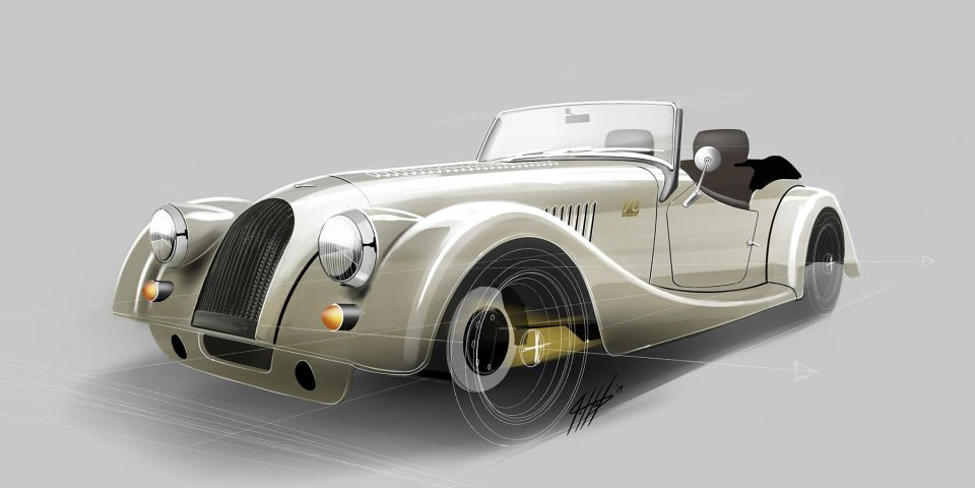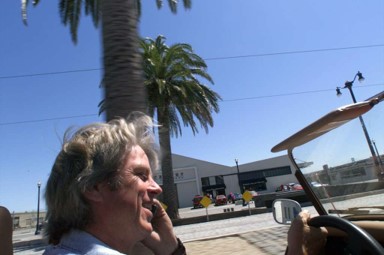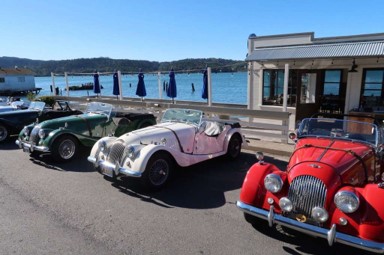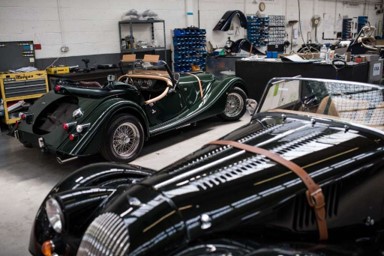MORGAN, LOTUS AND CATERHAM – THE BRITISH CONNECTION
BY CHRIS POLLITT April 12, 2020 (https://www.carandclassic.co.uk/)
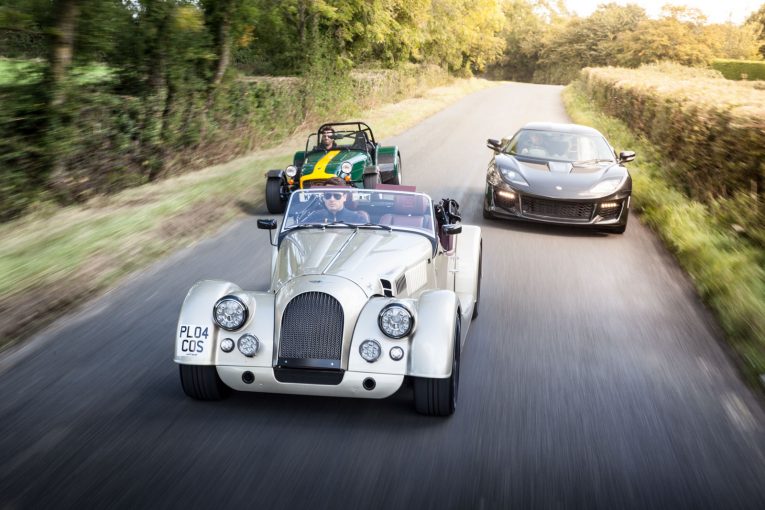
Photography by Bruce Holder
The lead shot for this feature wasn’t easy to get. A close-knit tracking shot is only ever millimetres away from looking like a Hollywood car crash, so you have to have your wits about you. On this occasion, that was somewhat difficult. There was a Morgan ARP4 ahead of me, and ahead of that was the Land Rover Defender tracking car, from which our photographer, Bruce Holder, was dangling precariously.
To my right, almost close enough to touch, was a Caterham Seven, exhausts barking while Paul, the driver, jostled for the perfect position to satisfy Bruce’s eye. As for me, I was in the Lotus Evora. I’ve already put plenty of miles on an ARP4. Plus, my mop of hair would have ruined the shot had I been in the lead car sans roof. Besides, I didn’t mind driving the Lotus, especially having discovered the button that makes the exhaust system even louder.
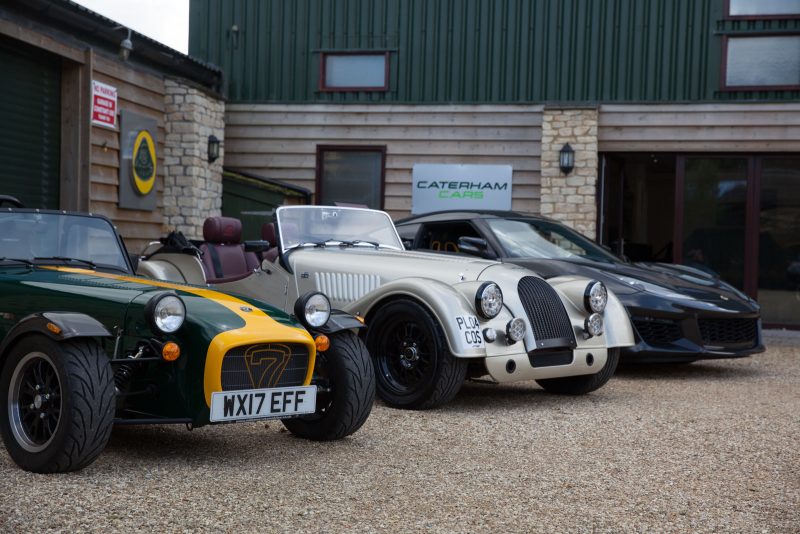
So why was it so difficult? Quite simply, because it was one hell of a distraction. Yes, other motorists were left agog at the sight of us three bombing along while a man on a string tried to take pictures (special acknowledgement goes to the man who’s chin was quite literally on his dash as he drank in the spectacle), but so was I. It was a hell of a moment. Three cars (four if you include the Defender) that all show why us Brits are a force to be reckoned with when it comes to going fast. When it comes to sports cars, Britain is at the top of its game.
Yes, it’s been a turbulent journey, with many great names falling by the wayside over the decades. But even though many British sports car builders have gone, that doesn’t mean we’ve been left with the dregs – far from it in fact. What we have now are the purest cars, the machines that have survived and evolved with such commitment that they have escaped our nation’s involuntary automotive cull. Basically, we’ve got the best of the best. But even so, that begs the question; which one floats my boat? And what of the ones that don’t?
CATERHAM SEVEN
To work that out, we have to look at the other cars flanking the ARP4. First of all, we have the Caterham Seven. Small enough to park under your stairs but with enough punch to rip them from the foundations, it’s a little brute. Obviously its origins are intertwined with Lotus, given that the Caterham started as Lotus Seven built under licence, but that’s where the ties end. A modern Caterham does not try to win over a modern Lotus customer. It’s too wild, too bare, and
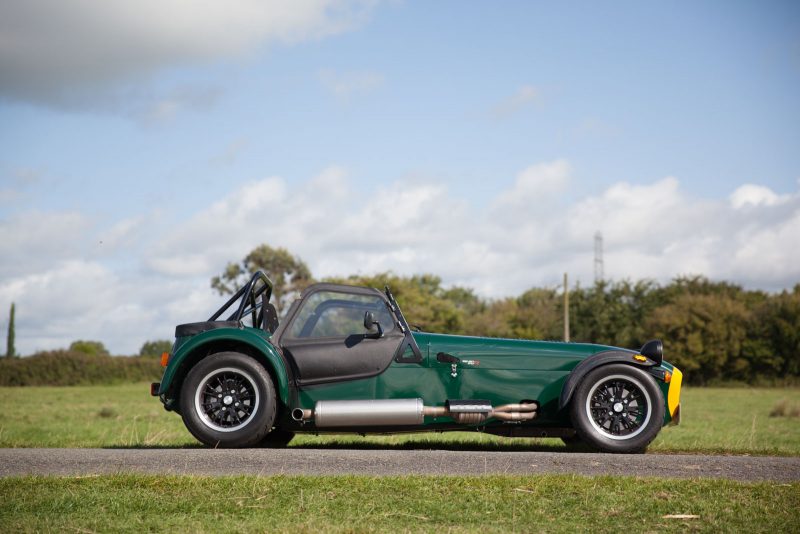
too barmy in fact. The Caterham Seven, in any guise, exists to appeal to those of us who put speed and excitement above all else. There are no compromises with this car. There is no boot, no creature comforts of any kind. It’s just man and machine working together; nothing more, nothing less.
Power-wise, the Seven is available with various outputs. In the case of the 310 we had our hands on, 152bhp was on tap from the 1.6-litre Sigma Ti-VCT engine, pushed through a five-speed transmission to the rear wheels. If that engine sounds familiar, that’s because it is. You’ll find it under the winged bonnet of a current Morgan 4/4. In the Malvern offering though, it’s a tame 110bhp unit that gently encourages the Morgan along. In the Caterham, it’s a different animal thanks to more power and a lot less weight. The Seven moves the scales to 540kg, which is about the same as the weekly ‘big shop’.
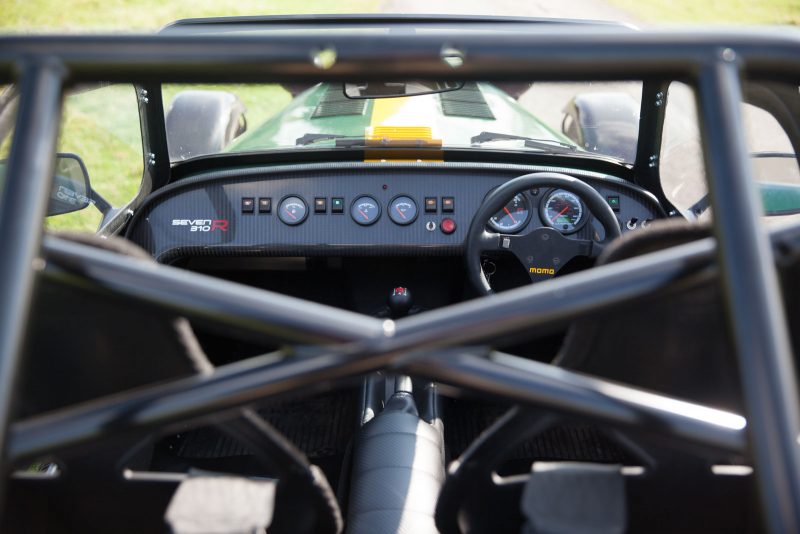
Drive the Seven and you need to adjust. Not only is your face contorted in ways you didn’t think possible by the rushing air, your body is also shocked. This thing is wild, untamed almost. It has no godly right to be as shouty, as outright fast and ultimately, as raw as it is. It feels unfinished, but not in a negligent sense. It just feels like it’s not a full car, it’s so light and basic. Given its tiny weight and silly power combination, you’d assume that the Seven has no grip. To do so would be to assume incorrectly. The De Dion semi-independent rear can put the power down without worry, while the front double-wishbone set-up ensures that the direct and mechanical steering points the car exactly where you want it.
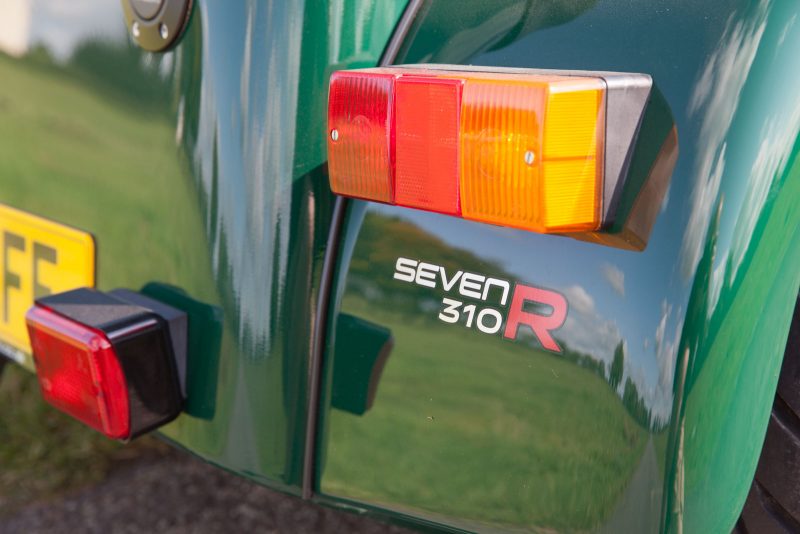
Disc brakes all round with no end of bite make sure you don’t end up in a tree. Driving a Morgan is an occasion, it’s an event. That’s why we love them. The Seven? It’s a swift kick to the senses. We love it, but for some, it may be a bit much. You can’t drive a Caterham in a civilised
manner. It’s the devil on your shoulder, the terrier tugging at its lead; it wants to go wild at all times. We applaud it for that but at the same time, we’re not sure we could live with it. It’s a car to be enjoyed when the mood takes you, not to be suffered when it doesn’t.
LOTUS EVORA
At the other end of the scale is the Lotus Evora. Full-bodied, it feels wider than it has any right to. But out of the three cars here, it also feels the most conventional and ‘car like’. Sitting in this thing, it’s obvious that the Evora is the kind of car that can swallow the miles while still rewarding the driver when he or she wants to push the pedal into the carpet. And rewarded you are. The Evora we have here is a 410, which as the name suggests, has 410bhp.
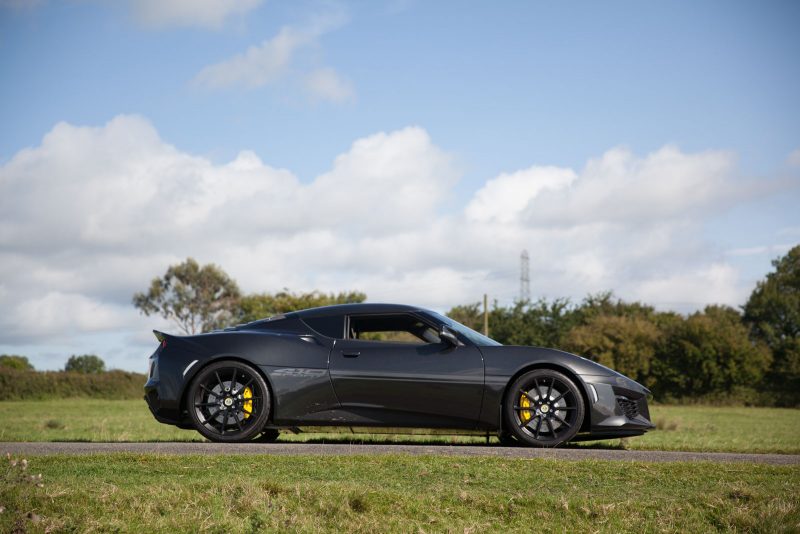
The Evora is an enigmatic beast. I won’t lie, I’ve never driven one before this and when I did, I was astonished by how quiet and civilised it was. You really could use an Evora every day, providing of course you’re limber enough to clamber into it on a regular basis. It doesn’t feel fragile or delicate; it felt tough and well engineered. It’s clear that Lotus has upped its game considerably over the years. But with a price tag around £80,000, so it damn well should.
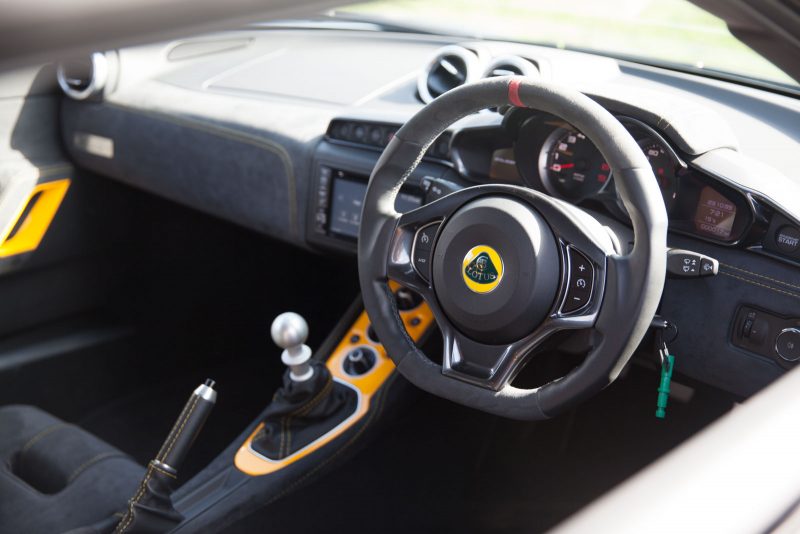
Powered by a 3.5 litre 24-valve V6 complete with an Edelbrock supercharger, there’s no doubt that this is a powerful car. But even so, it drives around with ease and without drama. You can quickly change that. A button on the dash allows you to make the exhaust louder, which is good for a giggle. If you want more, the Sport and Race buttons focus the Evora even more. The most remarkable transformation, however, simply comes via pressure on the accelerator. Give it a stab, hold it in gear and the Evora comes alive. The bark from the engine is incredible and with it, addictive. The suspension is firm but remarkably forgiving. The gear-change is mechanical and direct.
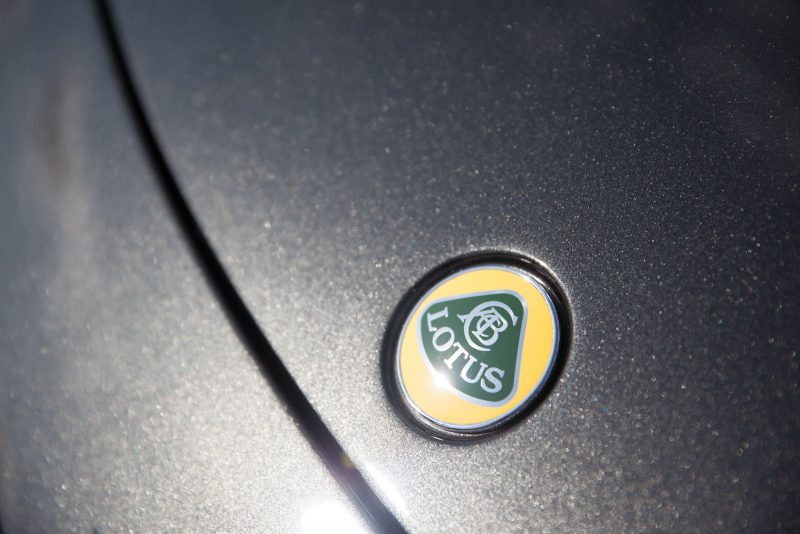
To drive an Evora fast is to be a part of the experience, not just a passenger. Back off though, and it’s just a car – albeit one with terrible rear visibility. We liked it – a lot. You get out of an Evora what you put into it. You’re in control, and that’s nice. But at the same time, we can’t help but feel it lacks a little soul. The switch between its ‘moods’ is so vast that it’s hard to bond with. It’s one thing or the other, but without any real emotion.
MORGAN ARP4
Finally, we have the ARP4. Even with its 225bhp Cosworth 2.0-litre Ford engine and modern, opinion-splitting LED headlights, it’s still far more anachronistic than the Lotus and even the Caterham. It looks classic despite being new. The lines of a Morgan are from the past, and it’s proud of it. It’s charming and enigmatic just from an aesthetic standpoint. As for the drive, yes, it’s firm and somewhat unforgiving on the more poorly-maintained surfaces but even so, you know where you are with it.
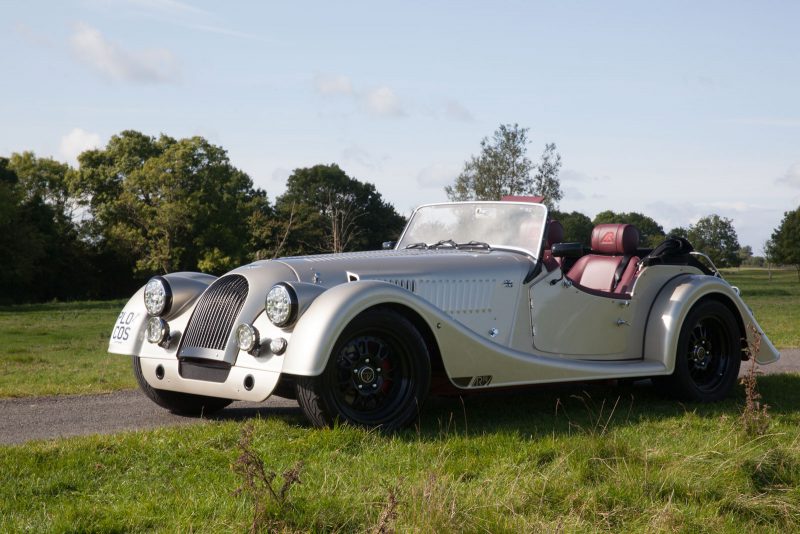
The Caterham is wild and angry at any pace. The Evora? It has the potential to be many things, but it needs you to choose via the onboard nodes. The ARP4 is a mix of all that. The engine has charm and character, whether you’re going 30 or 130mph. The only difference being that it shouts a bit louder at the latter.
It’s a balanced car, by which I mean it has no shifting personality. It takes very little time to bond with any Morgan and the ARP4 is no exception. It wants you to like it from the off and when you push it, it rewards you. You don’t need to be The Stig to get the most of it, but if you are, you’ll be rewarded appropriately.
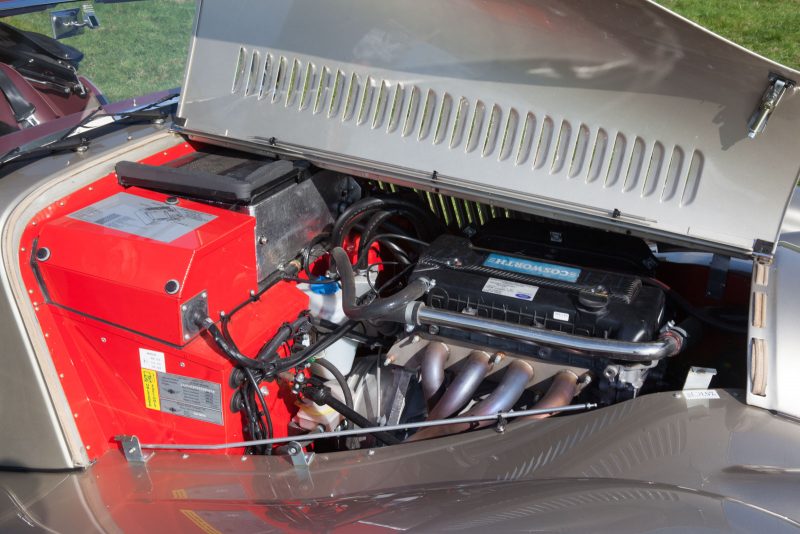
Price-wise, the ARP4 we had here can be yours for £60,000, which when put alongside the Caterham’s £30k and the Evora’s £80k, plonks it firmly in the middle. But it’s not a middling car. I’m not saying this with Morgan’s crosshairs aimed firmly at my temple, I’m saying it because I mean it: I would definitely have the Morgan. It’s a car for when the mood takes you, granted. I am certain that time spent behind the wheel purely out of necessity would mar the experience. But in a way, that thought is moot, as you would never buy such a car for ‘necessity’. You’d buy it for fun. And that’s why the ARP4 shines. It’s pure fun. You just jump in it and go. The Evora is great, but it’s too muted. The Caterham, for me at least, leans too much into compromises. It’s too raw, too full-on. It’s a machine you have to drive at 110%, and that would be exhausting.
For me, the ARP4 is a happy mix of the two, but with infinitely more charm, and charm is something I like in a car. The other two have their merits, of course. I love that as a country, we have cars like these. I loved the Lotus a lot. Its bark was infectious and had I been given more time with it, I’m sure my love would have grown. But even so, I know I would have been the one to provoke and create a reason for that love by driving it hard all the time.
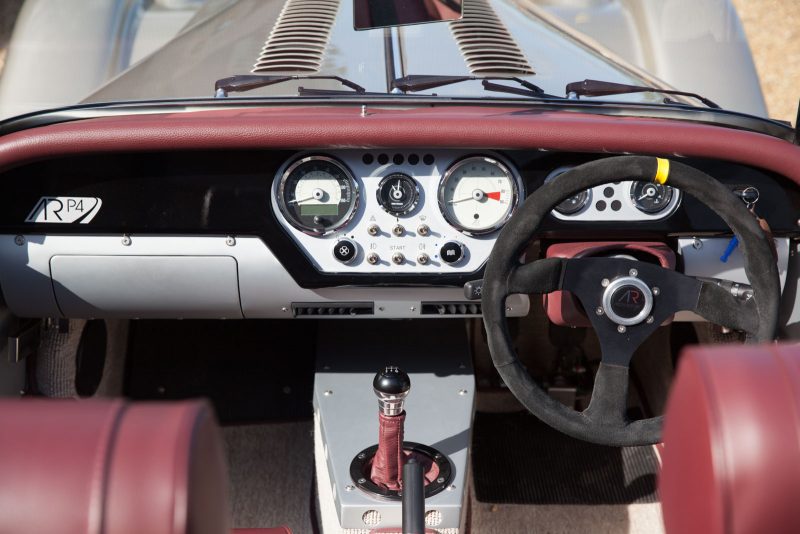
As for the Caterham, I love its unabashed madness, but you’d get sick of it quickly. As I said earlier, it’s a lot. It’s in your face at all times. But don’t get me wrong, I love that we, as great Britain, have these cars on our books. I love that all three are steeped in heritage and I was staggered by how far Lotus has come as a car-maker. But even so, the allure of the Morgan shone through for me. But that’s just me. You may choose a different fighter, and if you do, I’m confident that, as long as you buy it for the right reasons, you will be very happy indeed.
With thanks to Williams Automobiles in Chipping Sodbury, Bristol, who supplied all three cars for this shoot.

